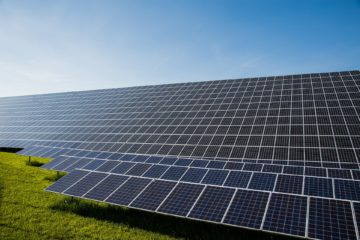When it comes to sustainability, large corporations and big box retailers can get a pretty bad reputation. How can a business that is so large and require so many resources to operate be sustainable? The truth is, large retail operations have the greatest opportunity and potential for creating a more sustainable future, and their size is a benefit not a detriment.
For example when the Swedish retail giant IKEA installed a solar energy array atop its Boston-area store in Stoughton, MA, the 5,468 panels were estimated to generate 1,080,900 kWh of clean electricity yearly, the equivalent of reducing 745 tons of carbon dioxide. IKEA has installed more than 700,000 solar panels on buildings across the world, with a solar presence of nearly 90% of its U.S. locations (2). Those energy savings are a sound investment that only a large corporation can make, but it also has a positive impact on the environment. The Stoughton IKEA store also has a green roof adjacent to the solar array, adding additional benefits.
With large retail operations having an abundant amount of rooftop space, green roofs can provide the energy and stormwater retention savings that mean much more to companies that operate on a massive scale and with tiny profit margins. In a study conducted on a Walmart roof in Chicago, half of the roof was a white roof while the other half had a layer of vegetation. The study found that the green and white roof combo saved a considerable amount of energy, but that if the entire roof was vegetative the facility could see an additional savings of 2-6%. This may not seem like a lot, but each roof translates into about $6,000-$18,000 in cost savings annually (1).
With Walmart being one of that largest retailers in the world (their U.S. parking lots alone could cover an entire city) making environmentally conscious investments, such as green roofs, can collectively save. In 2017, Walmart operated a total of 4,672 stores nationwide (3). By conservative estimates, the company could save over $28 million per year on energy reduction alone if they installed a green roof on each one. After the study in Chicago, Walmart concluded that a green roof doesn’t make sense in every city, but given the right incentives and policies they would be open to installing more. Other studies have found that larger green roofs are more effective, making the tops of retail giants such as Walmart, Target, and IKEA a perfect match.
With many cities across the world passing initiatives that require green roofs to cover a portion of large development projects, we are sure to see more green spaces in our neighborhoods. But even the less visible green roofs, like those atop your favorite shopping center, can reduce the impact of our retail therapy and result in serious cost savings.
Sources


